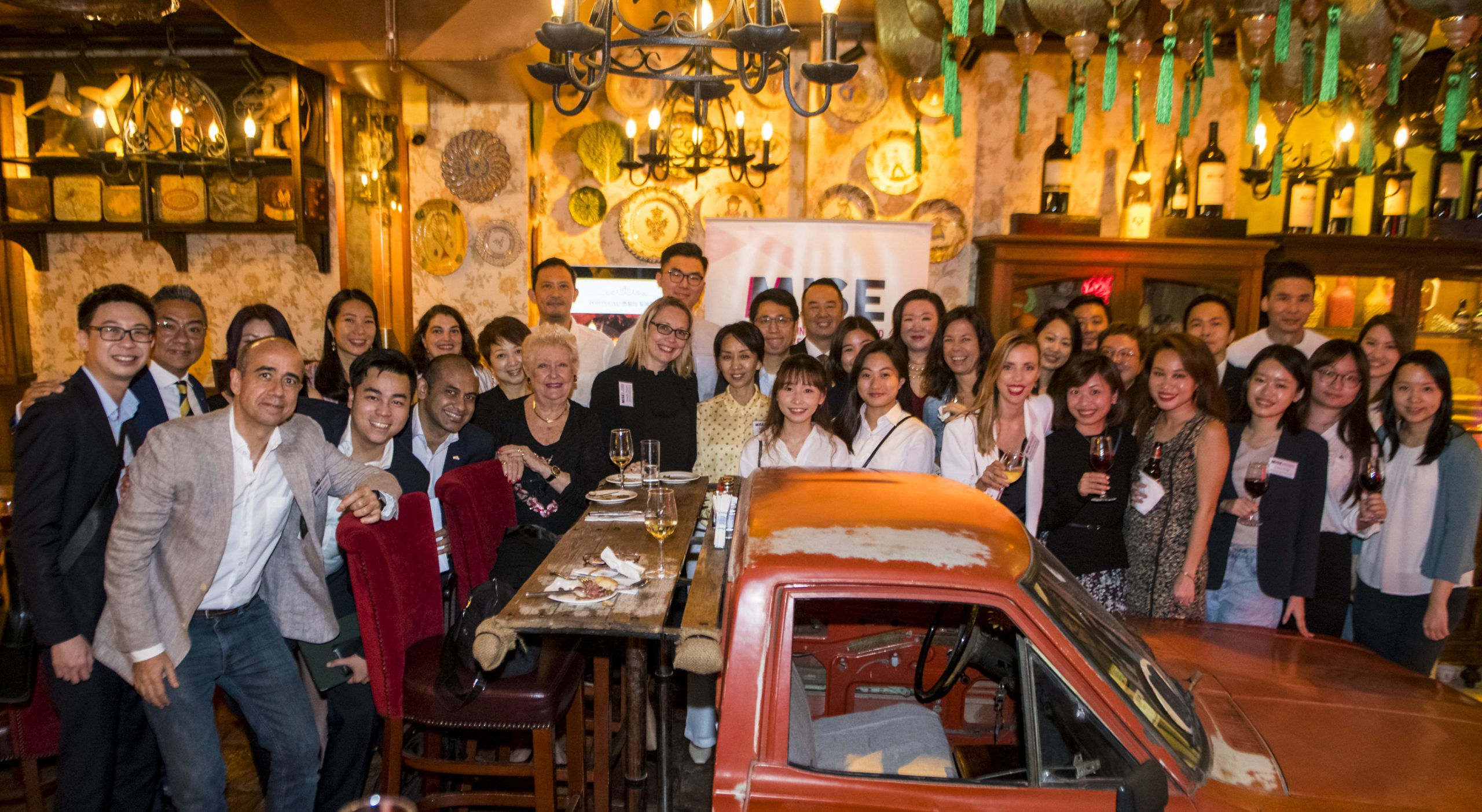Conferences, fashion shows, environmental programmes, sporting and other events offer companies many opportunities for sponsorship. Effective sponsorship must, above all, be strategic. Careful consideration must be paid to how you leverage the opportunity and how it fits into the company’s goals and mission to ensure your sponsored events make an impact on clients and employees alike.
One obvious area is sponsorship of a conference organised by an industry publication or trade association that covers your company’s market sector. From dinners to shoulder bags, to pens and stationary, conference organisers seek to offset costs and drive revenue from sponsorship packages.

With a range of opportunities for any company to capitalise on, the first key to choosing the right partnership is the core business model and what the company brand represents.
A veteran of advertising and sponsorship campaigns around the globe, Rob Campbell explains: “You have to keep your questions to the basics: what is the purpose of the event and thus the sponsorship? how can we enhance this with our product or service? and, what are the real business benefits, both external and internal?”
Jacqueline Scott, client services director for Pulse Communications, an Ogilvy PR company, has handled sponsorship for Vodafone – which sponsors the F1 Vodafone McLaren Mercedes team – for a number of years. Scott says the important thing is to look at “brands that have the same personality and values, and then look at how this sponsorship is going to shift brand awareness.
“F1 is seen as tech-savvy, futuristic, an expert in the field, which is why we sponsor. We see ourselves as being the experts incommunications and since F1 is global, we can represent this to all markets.”

Debby Cheung, director, Ogilvy PR, Shanghai, has advised UPS on its Olympics sponsorship. In all sponsorships, she says her team considers “relevance to the brand and to its mission or goals in the marketplace”. “And,” she adds, “you need to know: who does this appeal to? Who is your consumer and who do you want as your consumer? Those two components are very important. Third, you have to evaluate the opportunity for others in terms of being a leader and pushing forward in the market.”
UPS’ decision to sponsor the Chinese women’s volleyball team was a brand connection. “It is all about teamwork. It’s not just one person in either a logistics company or a team sport, so it fits with the UPS business model. But also the team has a potential for a gold medal and they are legendary in China. This positions UPS as the supporter of a strong team,” Cheung says.
When considering how to sponsor or partner with an event, companies have to think about what is going to surround the event – before, during and after. Cheung explains: “At the cocktail parties, will you have interviews with media and press before everything starts? During the event – let’s say it’s a forum – do you get a speaking opportunity, not just a logo on a brochure? There should be a VIP function during the event so that you have direct contact with participants and special guests. And afterward, how can you use the database or the contacts, or the press, etc for more interaction and leverage?”
Sporting events like the F1 Grand Prix races are perfect opportunities to leverage every aspect of an event. Scott says: “There needs to be an integrated approach to raise brand awareness.”
In addition to logo branding, Vodafone also has behind-the-scenes coverage of events over their networks, a website dedicated to the partnership with exclusive interviews and information, as well as participation through hospitality, lucky draws and incentive programmes. Before and after the event, special interviews and meet-and-greet sessions with the drivers are arranged, while journalists and key clients are courted in special VIP events and boxes.
Vodafone leverages their sponsorship for every segment of its target audience and works to build relationships by enhancing the event experience before, during and after the races.
UPS is still in the “before” stage, where Olympic sponsorship is concerned, but has already launched a multilingual website, advertising campaign and one cutting-edge fashion show in which a celebrity designer took the historically drab, brown colour of UPS uniforms and made it into stunning, couture-inspired creations that the models – the volleyball players themselves, as well as their coach – wore while strutting down the catwalk. Through this event, the sponsorship was not just presented through advertising and logos, but was covered in a unique way internationally on television, in the business press and in fashion and lifestyle magazines. Singular events that bring about the potential for increased coverage and applicability are what companies should be looking for in all aspects of sponsorship.

ACTIVE PARTICIPATION
Long-term partnerships can help in bridging the gap from participating in the “during” but not quite knowing how to leverage the “before” and “after”.
For instance, in 2002, Standard Chartered Bank became the title sponsor of the Singapore Marathon, giving it the opportunity to splash its name on signage, advertising, press and media articles, as well as runner number tags, event participant lanyards, and pretty much every other aspect of kit associated with the event. But by actively taking the reins for several years now, Standard Chartered also hosts the launches, press events, wrap-up talks, interviews with the marathon winners, and VIP events associated with the Singapore Marathon. Every aspect of the event is linked to Standard Chartered.
Sponsorship is often seen as an easy way to generate PR. But experts warn that it is not the best way to get the most out of the opportunity.
Scott says: “It’s not simply putting a logo on a jersey or on a flyer. You need to have the funds to leverage that sponsorship.”
However, that is all specific to the event and to the level of sponsorship the company chooses to take on. As long as there is a conscious effort to be involved in every aspect of the event and be active about the opportunity, companies will see sponsorships for exactly what they are: the chance to connect and build relationships.
A firm can strengthen relationships with existing customers, become relevant to new consumers, enhance the experience of an event and become a name associated with it, as well as offer employees and clients a “can’t buy it” experience. However, there are downsides to sponsorship, which should be taken into account.
One drawback is not having enough budget to leverage the opportunity properly. Campbell notes: “I can’t overemphasise how important active branding is. Passive branding and that type of communication is everywhere. People see so much of it that it’s too common. You need to do it right, or don’t bother.”
Both local and globally recognised events can pose a host of unique opportunities to strengthen branding, enhance a company’s core values, and integrate services and products into an event.
With some creativity and an eye toward making participation in an event a company-wide effort, sponsorship can be successful for all parties, offering one-of-a-kind experiences and memories that will keep clients and customers coming back.
DOING THE DEAL
Conference sponsorship connects your company to key customers, suppliers or industry figures, writes Kenny Coyle. It puts your brand in front of opinion-leaders and decision-makers and, depending on the package, offers access to contacts or can put your top executives on the speakers’ podium.
The following is fairly typical of sponsorship packages. Prices will vary depending on expected attendance, exclusivity of participation and so on, so they should be treated as a guide only. In this case, it is taken from a two-day Asia-Pacific business outlook conference.
Platinum Sponsorship
Cost: US$15,000
Exclusivity: Your company will be the only conference sponsor within your industry.
Broad recognition: Your company’s logo will be featured as Platinum Sponsor in all conference promotional materials and programme collaterals, as well as on the website.
Introductions recognising your company will be made at the conference opening. Your logo will be featured as Platinum Sponsor on signage at the conference.
Preferential access: Your company will receive six invitations to the exclusive VIP dinner for speakers and sponsors.
VIP dinner: One seat at the head table at the VIP dinner and at one of the luncheons.
Conference admission: Fifteen complimentary tickets to the two-day conference and the first evening’s networking reception.
Booth space: You are entitled to display your company’s promotional materials at your booth inside the conference hall. You may also provide promotional items for distribution to all participants in the conference.
Business Seminar: Your company may present up to two seminars at the conference (topics subject to approval).
Gold Sponsorship
Cost: US$10,000
Broad recognition: Your company’s logo will be featured as Gold Sponsor in all conference promotional materials and programme collaterals, as well as on the website and on signage.
VIP dinner: Four invitations and one seat at the head table at one of the luncheons.
Conference admission: Ten complimentary tickets to the conference and networking reception.
Exhibit Space: You may display your company’s promotional materials at an exhibit table inside the conference hall and provide them for distribution to all conference participants.
Business seminar: Your company may present one seminar at the conference (topic subject to approval).
Silver Sponsorship
Cost: US$5,000
Broad recognition: Your logo will be featured as Silver Sponsor in all promotional materials and programme collaterals, as well as on the website and signage.
VIP dinner: Two invitations. One seat at the head table at one of the luncheons.
Conference admission: Five tickets to the conference and evening networking reception.
Exhibit space: You may display your company’s promotional materials at an exhibit table inside the conference hall and provide them for distribution to all conference participants.
All sponsors will receive a digital contact list of all conference participants and supporting organisations.
Make it matter
Rob Campbell gives advice on how to make your sponsorship opportunities a perfect match to your business:
“We’ve gotten into this habit that ‘all opportunities are good opportunities’, and I don’t believe that anymore. Today, we are so awash with communication that quite often communication acts more as a deterrent than a motivator for consumers. Appreciating what the event means to people is vital because this ensures you work with the event rather than come from a seemingly different angle.
“A lot of people still see sponsorship as a cheap option to get their name out there, however, what’s the point if the only association you have is your name linked to the event?
“If you’re going to maximise the value, you have to leverage the sponsorship through events, activities, promotions, communication, etc, with consumers, clients (including potential clients), as well as employees.
“Be inventive and create an event. Nike created the Nike Fun Run – which has become hugely popular – because this addressed some core business issues better than leveraging someone else’s event. Sure, it’s potentially more work to do it yourself, but it’s also potentially much more rewarding.”
TEAMBUILDING OPPORTUNITIES
Involving your own staff in certain sponsored projects and programmes can have the added benefit of improving employee communication and networking.
For the second year, Goldman Sachs in July sponsored the Green Long March, a nationwide youth programme in China that aims to make people in large cities and rural areas more aware of environmental issues. The non-profit Future Generations and Beijing Forestry University came together with corporate sponsors to allow thousands of students from 43 universities, in teams, to travel along 10 routes across China to speak with local people about sustainable development awareness.
Edward Naylor, head of corporate communications, Asia-Pacific, explains why Goldman Sachs participated as a gold sponsor: “The event was compatible with our values and we admire the organiser’s vision to raise environmental awareness and sustainable development in China. We’ve long been committed to environmental causes, and we strive to play a relevant role in addressing today’s environmental challenges.”
This event allows employees from Goldman’s Community Teamworks volunteering programme to get involved. And the Green Long March adds to the bank’s portfolio of worthy causes that employees can become involved in as a goodwill and teambuilding effort.
“This year, 40 employees have already made contributions in every aspect of the march, and we anticipate more to be involved as the events continue surrounding the march.”
In addition to funding, the bank has lent its hand in project design, marketing strategy, participating in the walk andevent organisation.
Through their sponsorship, Goldman Sachs has supported its brand values as an eco-conscious company dedicated to helping others understand how every person can help make the environment just a little bit better.
In this case, Goldman Sachs brought press and attention to the cause, and has positively impacted the overall outcome of the Green Long March. Giving back is good, and can be very good for companies looking to sponsor events with goodwill in mind.
Staff motivation
Ogilvy’s Debby Cheung warns: “A lot of times sponsorship neglects the internal people. Many times, the marketing team is involved, the CEO is involved, but the staff has to read about everything second-hand and don’t feel part of it. If you sponsor a concert and give tickets to guests, but you don’t give them to the staff, you are missing out on a great way to boost staff morale and loyalty.” Internally, there should be not just newsletters, but also a hospitality programme for employees, and Cheung suggests a lucky draw. Even if just one employee has the opportunity for a once-in-a-lifetime experience, the overall atmosphere around the event internally would be a successful as a teambuilding effort.
TOP TIPS
• Plan well ahead
• Set a budget and stick to it
• Choose the right partners
• Ensure the event fits your brand message
• Don’t be over-ambitious, set your target sensibly
• Make sure the venue fits with your brand profile
• Don’t skimp on using the best outside professionals where necessary
• Have a back-up plan for emergencies
• Maximise media coverage
• Analyse the outcome


